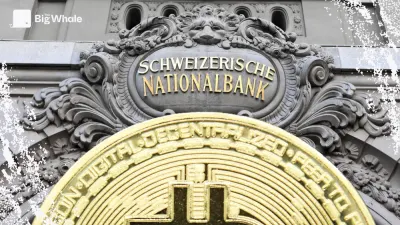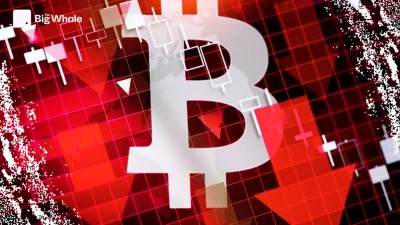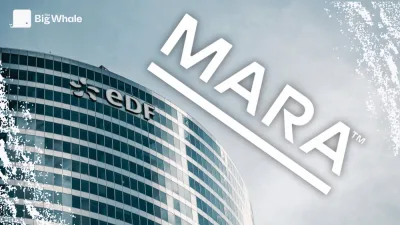TBW - Pectra: Everything the next Ethereum update will change

Ethereum has continued to evolve since its inception, with major updates such as The Merge in 2022 (marking the transition to Proof of Stake) and Dencun in 2024 (introducing blobs for L2). A new update is on the way: Pectra, scheduled for April 2025.
its name combines Prague (the execution layer hard fork) and Electra (the consensus layer fork), which will be activated simultaneously.
This development not only represents a major technological breakthrough for Ethereum, but also promises to fundamentally transform the user experience and structure of the ecosystem.
Pectra stands out for integrating the largest number of EIPs ever included in an update. It marks a decisive step towards account abstraction, an innovation that will make on-chain interactions smoother, smarter and more accessible.
What are the main improvements?
👉 EIP-7702: Turning your wallet into a smart contract
Today, if you use a wallet like Metamask, you have a classic external account (EOA). This type of account requires you to sign each transaction separately and you have to pay the gas fee for each action.
With EIP-7702, your address can temporarily behave like a smart contract, allowing more sophisticated interactions without changing your address.
Example 1: Paying in instalments without an intermediary
Imagine you buy an NFT for 500 USDC but don't want to pay it all at once. Currently, you either need an intermediary to manage this payment in instalments, or you need to use an external smart contract.
With EIP-7702, your own address can behave like a smart contract, allowing you to automate a payment in three instalments without any additional infrastructure.
Example 2: One-step transactions on Uniswap
Today, exchanging a token on Uniswap requires two separate transactions:
- You must approve the Uniswap smart contract to use your tokens.
- You then perform the exchange transaction.
With EIP-7702, these two steps can be combined into one, saving time and gas fees.
Example 3: Trading without having ETH
A common problem on Ethereum is that you have tokens (e.g. USDC) but no ETH to pay the gas fees.
Thanks to the account abstraction provided by EIP-7702, an application can directly handle these fees, allowing transactions to be made without owning ETH.
👉 EIP-7251: Bigger validators, more efficient staking
Today, an Ethereum validator can only stake 32 ETH. If someone has 3,200 ETH, they have to manage 100 validators. This is complicated and unnecessarily overloads the network.
With EIP-7251, this cap is increased to 2048 ETH per validator, which considerably simplifies staking management.
Example 1: No more waiting to reinvest rewards
Today, if a validator earns 10 ETH in rewards, they cannot use them immediately: they have to wait until they reach 32 ETH to open a new validator.
With EIP-7251, these rewards are directly reinvested, generating even more returns without any intervention.
Example 2: Cost reduction and simplification for large stakers
Players like Lido, Coinbase, Binance manage thousands of validators, which represents a large technical load.
After the upgrade, they will be able to consolidate their positions and reduce the number of validators needed, making the network more efficient and less resource-intensive.
👉 EIP-7691: More blobs, more efficient and cheaper rollups
Rollups (Arbitrum, Optimism, zkSync) use blobs to store their data at lower cost, instead of saturating Ethereum's main blockchain.
Today, the number of blobs is limited and already used to capacity, which prevents rollups from working optimally.
With EIP-7691, Ethereum is increasing the number of available blobs per block, which reduces congestion and stabilises fees.
With the Dencun update, blobs have reduced rollup fees by a factor of 10.
By increasing their quantity, transactions will remain affordable even during busy periods.
>> Read also: Why blobs will become the keystone of the Ethereum economy
>> Read also: Ethereum: What is the business model for a layer 2?
👉 EIP-7623: Redirect rollups to blobs, avoid calldata congestion
Ethereum offers two ways to store rollup data:
- Blobs (cheaper, but limited).
- Calldata (older system, more expensive, but still used when blobs are saturated).
Problem: Some rollups still use calldata when it's cheaper, which overloads Ethereum.
With EIP-7623, calldata becomes more expensive, forcing rollups to use blobs first.
👉 EIP-7840: Smarter, automated blob management
Today, each Ethereum client (Geth, Nethermind, etc.) has to manually adjust blob management. This requires complex updates and human intervention at each fork.
With EIP-7840, these parameters are centralised under a calendar system that automatically adjusts the number of blobs and their fees.
Example 1: More consistency between all Ethereum clients
Actually, each blob update can be managed differently depending on the Ethereum client used.
With EIP-7840, all clients will follow the same rules, avoiding discrepancies in the network.
Example 2: Smoother, automated updates
Today, technical discussions are required for every change.
Thanks to EIP-7840, adjustments are made automatically via a schedule integrated into Ethereum client configuration files.
👉 Other Pectra EIPs
Other improvements complete this update. The EIP-7002 makes withdrawals easier for validators by allowing them to access their funds directly without going through the consensus layer. The EIP-7685 improves communication between the execution layer and the consensus layer, reducing reliance on centralised oracles. The EIP-2537 optimises certain cryptographic operations, making their execution faster and less gas-intensive. The EIP-2935 introduces a system contract storing the latest block hashes to facilitate access to the history. Finally, the EIP-6110 and EIP-7549 improve the management and verification of validators, making consensus more fluid and secure.
Why is Ethereum frequently updated?
Ethereum needs to be regularly updated to adapt to the challenges it faces and continue to provide an optimal experience for its users. Without these upgrades, it risks becoming too slow, too expensive to use or less secure.
One of the main reasons for upgrades is scalability. As more and more people use Ethereum, the network needs to be able to handle more transactions while keeping fees affordable. Each update therefore accompanies this growing adoption by incorporating solutions such as rollups and blobs, which optimise the network's capacity and make it more accessible. Without these adjustments, Ethereum would become a victim of its own success, with prohibitive costs and all-too-frequent congestion.
Security is also a major issue. As Ethereum is a public and open blockchain, it is constantly exposed to potential attacks. Updates help to anticipate these threats and improve the robustness of the network to ensure its resilience against new forms of cyberattack. Without these regular improvements, Ethereum would risk becoming vulnerable and less reliable.
The evolution of the network also aims to make developers' work easier. With each update, new features are added to simplify the creation of decentralised applications, making Ethereum more attractive for innovation. A vibrant and efficient ecosystem attracts more entrepreneurs, startups and institutions, strengthening Ethereum's place as the go-to infrastructure for decentralised finance and beyond.
Finally, these updates prepare for the future by enabling Ethereum to become faster, more efficient and more sustainable. The move to proof-of-stake has already significantly reduced its energy footprint, and future upgrades will continue to refine how it works so that it can evolve without sacrificing its decentralisation.
Bitcoin, on the other hand, is evolving much more slowly. Unlike Ethereum, which has to continually adapt to keep up with its rise, Bitcoin has a different goal: to be a stable and secure digital currency. Its governance is more conservative, and each change is evaluated very carefully to avoid any risk that could compromise its robustness. Its architecture is also simpler, since it does not support complex smart contracts like Ethereum. Its primary role is to provide a censorship-resistant medium of exchange and store of value, and it does not need to evolve as much to fulfil this mission.
How will this affect ETH?
It is difficult to predict with certainty whether the Pectra update will have a direct impact on ETH's share price. The history of previous network upgrades, such as The Merge in 2022 and Dencun in 2024, shows that even major breakthroughs have not been enough to propel Ethereum to new heights. Despite fundamental improvements, ETH has still not regained its 2021 ATH, and even ETF adoption, despite leading to the massive purchase of over 898,843 ETH by 12 February 2025, has not been a sufficient catalyst for a significant bullish recovery.
Since The Merge, accumulation patterns have changed. Long-term holders are showing a slowdown in their accumulation, and part of the community seems to have distanced itself from the network's new direction. This change is reflected in market dynamics, where Ethereum no longer enjoys the same speculative enthusiasm as it did at certain key periods in its history. In addition, growing pressure on the Ethereum Foundation and internal debates around the protocol's governance add further uncertainty.
>> Read also : Ethereum Foundation : An essential but contested organisation
>> Read also : Jérôme de Tychey : "My proposals for the Ethereum Foundation"
However, Pectra should not be seen solely as a technical update. It is part of a broader strategy to improve scalability, reduce fees and make staking more accessible. In the long term, these advances could boost adoption of Ethereum and give it an even more dominant position in the blockchain ecosystem. If they make the network easier to use and attract new developers and users, this could, over time, support ETH's price.
In the short term, the market will react primarily to expectations and the execution of the update. As always, the price of ETH depends on many other factors: the regulatory framework, monetary policy, inflows and outflows of ETH ETFs, as well as overall investor confidence. A smooth execution of Pectra could certainly restore some of that confidence, but expecting an immediate spike in price could be illusory.
The key is to look at the bigger picture. Ethereum continues to evolve and each update represents a step towards a more powerful network. While Pectra alone may not be enough to trigger a massive bull run, it is part of a broader roadmap that could, in the long term, consolidate Ethereum as the must-have infrastructure for Web3.
>> Read also - Ethereum (ETH): What awaits the protocol and its token?
Ethereum's next steps
The Pectra update is just one step in the evolution of Ethereum, which is following an ever-improving roadmap. The next major planned update is called Fusaka, and its main objective is to integrate PeerDAS, a technology that will enable better data management on Ethereum and gradually increase the capacity of blobs.
Today, blobs are an essential resource for rollups like Arbitrum and Optimism, as they allow them to store their data at lower cost and improve Ethereum's scalability. With Fusaka, their quantity could be doubled or even quadrupled, and then continue to increase gradually to a factor of 8 or more. In the long term, an advanced mechanism known as 2D sampling could make it possible to process up to 128 blobs per slot, drastically increasing network capacity. Thanks to these improvements and more efficient data compression techniques, Ethereum and its Layer 2s could reach up to 100,000 transactions per second (TPS), making the network much faster and smoother for its users.
In parallel, Fusaka will integrate the Ethereum Object Format (EOF), a more technical but crucial improvement. This development aims to better organise the bytecode of the Ethereum Virtual Machine (EVM), clearly separating code and data. This will enable better code validation, greater security and more efficient execution of smart contracts.
The Ethereum roadmap does not follow a fixed timetable and is constantly evolving. Several developments are carried out in parallel, advancing at different speeds depending on their priority. Some updates may be accelerated if technological advances or external threats, such as a sudden development in quantum computers, make urgent adjustments necessary to guarantee the network's security.
Vitalik Buterin recently shared his vision of future priorities. In his view, Ethereum must first and foremost optimise blobs before spreading itself too thin on other innovations. Improving the peer-to-peer (P2P) network is also a key point, as better management of the transmission of blobs will make the network more efficient. He also envisages giving more flexibility to stakers, allowing them to adjust blob capacity without requiring a complete protocol update. Finally, more radical approaches could be explored to further accelerate Ethereum's scalability, while maintaining the network's accessibility to smaller validators.
The next steps remain speculative, but some industry experts believe Ethereum should accelerate its development to respond more quickly to the challenges of adoption and competition. Despite these uncertainties, the fundamental objective of the network remains the same: to reduce transaction costs, improve security and make Ethereum more scalable.
With this in mind, rollups remain at the heart of the priorities, as they represent the key to Ethereum's scalability in the medium and long term. All future updates are therefore geared towards optimising the network, improving the user experience and ramping up second-layer solutions.



